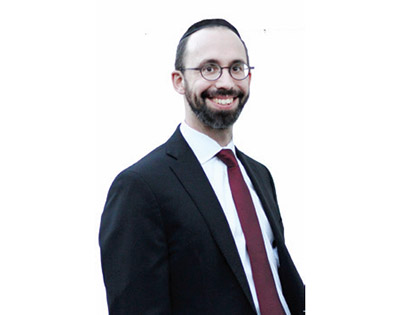
Isn’t it interesting that two people can witness the same event and be affected in completely opposite ways? The great sage, Rebbi Yochanan, was swimming one day and the most notorious outlaw at the time, Reish Lakish, jumped right over a pool to attack him. Most people would be terrified by this display of incredible might, but Rebbi Yochanan was unfazed. He saw the greatness inside Reish Lakish and engaged his potential foe in deep conversation, challenging him to imagine what he might accomplish if he applied his strength, prowess and cunning for Torah learning! Rebbi Yochanan ended up offering his sister as a wife to Reish Lakish if he would devote his life to Torah study. Reish Lakish accepted the offer and became the great contemporary of Rebbi Yochanan.
In another episode displaying contrasting perspectives, we see Rebbi Yossi ben Yoezer being led to his execution on a horse on Shabbos, for violating the Greek decree forbidding the Jews to keep Shabbos. His apostate nephew, riding on his own horse in desecration of Shabbos, jeered his uncle with biting words: “See what happens to those who fear Hashem,” he said mockingly. With full composure, Rebbi Yossi responded, “If this is what happens to those who fear Hashem, imagine what happens to those who don’t fear Hashem.” The words of his uncle penetrated his nephew’s heart and he submitted himself for capital punishment as a repentance for his sins.
The same occurrence can lead to two different perspectives—it just depends on where you’re coming from.
A similar phenomenon presents itself in our enigmatic Torah portion this week. Here, we discuss the para aduma (red heifer), where the spiritual opposites of purity and defilement are at play. The paradox is simple: those who prepared the ashes of the para aduma were required to be pure, but as a consequence of preparing the ashes became impure, even though the ashes were then used to make the impure become pure. What message is Hashem telling us through this anomaly?
Hashem created the world with many opposites: holy and ordinary, light and dark, rich and poor, night and day, good and evil. It’s difficult to understand why Hashem made the world this way, yet the most challenging question of all remains: What is the purpose of evil in the world?
The great gaon and ba’al mussar, Rav Eliyahu Dessler, zt”l, explains that evil is meant to serve as a catalyst for good! As the Sfas Emes notes, the Hebrew word ra, evil, spelled backward is ar, meaning “awaken.” The purpose of evil is to awaken the good.
The Chidushei Harim points out that the Hebrew word for world is olam, which has the same etymological root as the word na’alem, meaning “hidden.” This physical world attempts to hide the existence of Hashem. What looks like death and impurity on the surface could actually be a source of life and purity.
It appears, therefore, that contrast is a crucial learning tool. It helps to shape and frame our life experiences. It can serve as a wake-up call.
With this in mind, we can understand why the Midrash tells us that the para aduma was meant to atone for the sin of the golden calf. This tragic sin was the most severe Chilul Hashem—desecration of Hashem’s Name—in history. Rav Dessler, zt”l, says that every Chilul Hashem can be transformed into a Kiddush Hashem, a sanctification of Hashem’s Name, if only we learn from it.
I heard from Rav Reuven Leuchter that although we think Hashem sends us challenges and tests to pass, sometimes the whole objective of the test is to learn from the mistake. Facing evil squarely, and even slipping a little bit, can affirmatively awaken us to make decisive moves to choose good! The sharp contrast of good and evil causes us to spring into action.
This analysis leads into Parshas Hachodesh. The word chodesh means both “new” and “month” (depending on the nekudos, the dots under the letters). The month of Nisan is really our New Year since it’s the month in which we became the Jewish nation. At the close of the year we can reflect on our apparent “losses.” We can then realize that the only real loss we suffered was to become distanced from Hashem. When we plug Hashem into the equation of life we understand that behind every apparent loss is a potential gain. It’s always there for us to choose.
It’s in Nisan that Hashem took us from the lowest level of servitude and defilement to the soaring height of receiving the Torah at Har Sinai. The hand of Hashem is always stretched out to welcome us; we just need to choose to be close to Him.
By Rabbi Baruch Bodenheim
Rabbi Baruch Bodenheim is the associate rosh yeshiva of Passaic Torah Institute (PTI)/Yeshiva Ner Boruch. PTI has attracted people from all over northern New Jersey, including Teaneck, Bergenfield, Paramus, Rockaway and Fair Lawn. He initiated and continues to lead a multi-level Gemara learning program. Recently he has spread out beyond PTI to begin a weekly beis midrash program with in-depth chavrusa learning in Livingston and Springfield. This year he joined Heichal Hatorah in Teaneck as a Gemara iyun rebbe. His email is rb@ptiweb.org.









